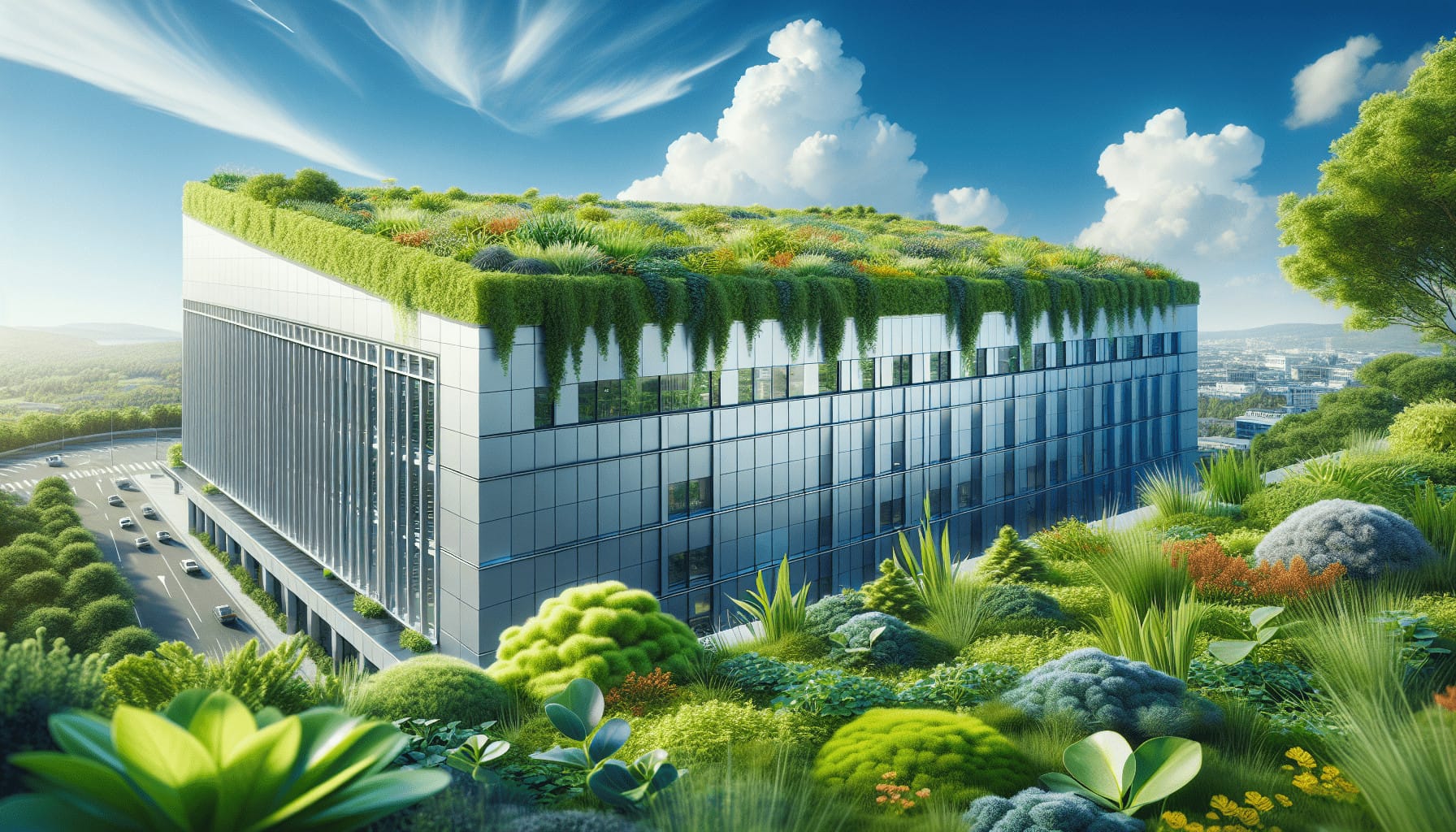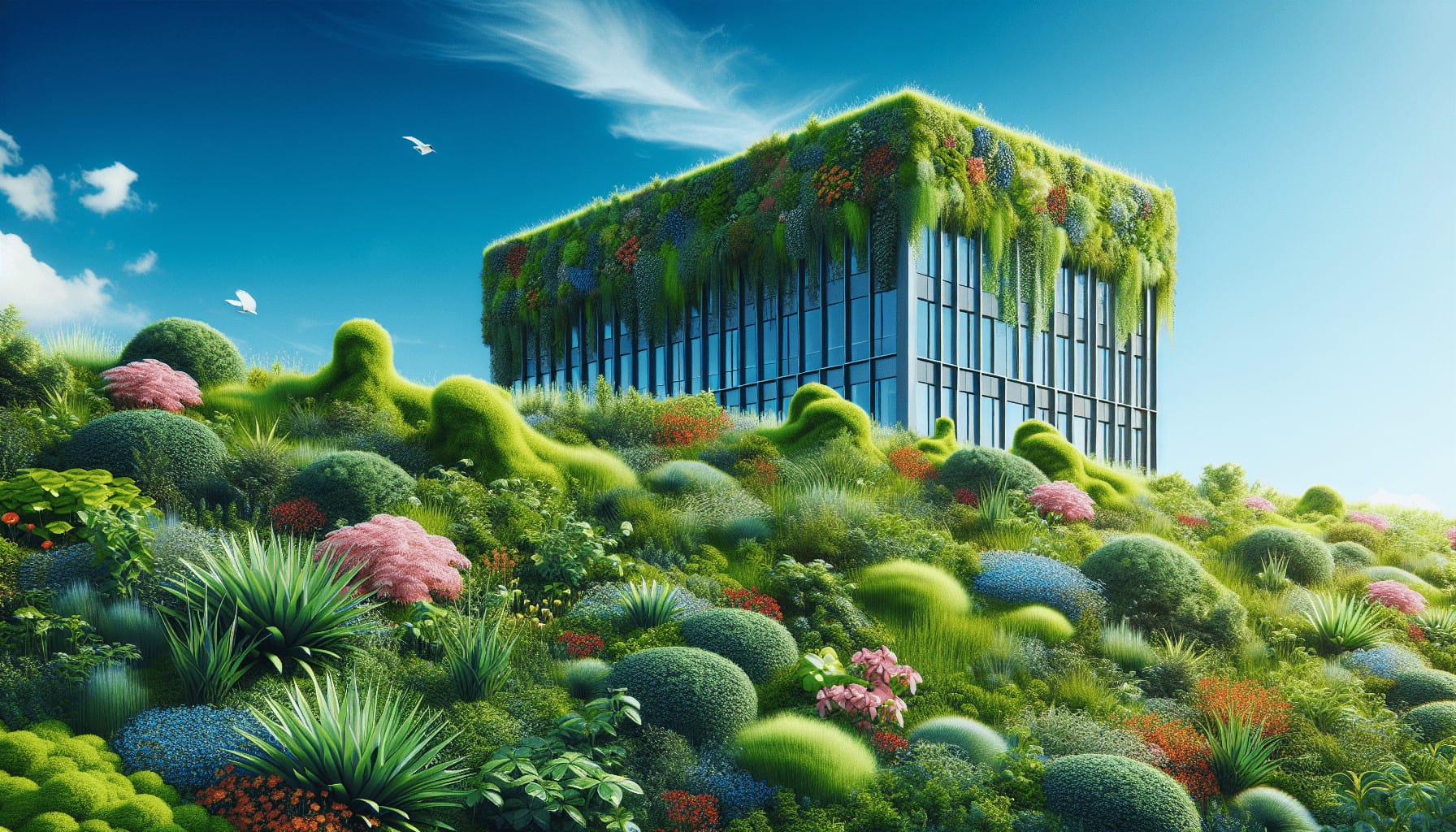Have you ever wondered how buildings today are integrating sustainability into their very structure? If you have, then you’re in the right place to learn about green roof systems and their connection to LEED certification. As our urban landscapes continue to expand, the necessity of creating environmentally friendly and sustainable building practices becomes increasingly apparent. One innovative solution gaining traction is the implementation of green roof systems. These green wonders are not only visually appealing but also contribute significantly to sustainability goals and can help achieve LEED certification.
Understanding Green Roof Systems
Let’s start by looking at what green roof systems are. Essentially, they’re a layer of vegetation planted over a waterproofing system on a flat or slightly sloped roof. This setup can bring several environmental benefits to both the building and its surroundings.
Types of Green Roof Systems
There are two primary types of green roof systems you should know about: extensive green roofs and intensive green roofs.
Extensive Green Roofs: These are relatively shallow, with a depth of about 2 to 6 inches of growing media. They are-lightweight, require minimal maintenance, and are typically used for their environmental benefits rather than for accessibility. Imagine a quiet meadow high above the city streets—extensive green roofs create a serene, low-weight form of greenery that blends form with function.
Intensive Green Roofs: These are deeper and heavier, with a depth of more than 6 inches. They require more maintenance but can support a diverse variety of plant life, including trees and shrubs. Think of them as roof gardens, offering both aesthetic and practical uses for urban spaces.
Benefits of Green Roof Systems
You might be curious about the perks these green systems offer. From ecological impacts to financial returns, there’s a lot to consider:
Environmental Impact: Green roofs contribute to reducing the urban heat island effect, where cities become significantly warmer than surrounding rural areas. They also aid in stormwater management by absorbing rainfall, reducing runoff and lowering flood risks. Plus, they can play a role in improving air quality and promoting biodiversity by providing habitats for insects and birds.
Economic Benefits: In the long run, green roofs can result in reduced heating and cooling costs due to their insulation properties. Additionally, they can increase the lifespan of the waterproofing membrane by protecting it from UV rays and temperature fluctuations.
Social Benefits: These urban oases can provide excellent recreational spaces and improve overall mental well-being by offering a slice of nature in the middle of the concrete jungle.
Navigating LEED Certification
Now, what about LEED certification? LEED, or Leadership in Energy and Environmental Design, is a globally recognized certification system for sustainable building practices. It provides a framework for healthy, efficient, and cost-saving green buildings.
LEED Certification Levels
Comprehending LEED certification levels is crucial in understanding how green roof systems can help in scoring higher points. Consider the following categories:
Certified: This is the entry-level for LEED certification, achieved by earning 40-49 points.
Silver: The next step requires you to accumulate 50-59 points.
Gold: By meeting higher standards and earning 60-79 points, your building achieves the gold certification.
Platinum: Considered the pinnacle of LEED certification, platinum status demands 80 or more points for outstanding green building practices.
Integrating Green Roofs with LEED
Green roofs can contribute significantly to LEED points across several categories. Here’s how they fit into the LEED framework:
Sustainable Sites: Implementing a green roof can earn credits under Sustainable Sites by reducing the heat island effect and promoting open space.
Water Efficiency: By capturing stormwater, green roofs contribute to water efficiency credits, reducing the building’s reliance on local stormwater infrastructure.
Energy and Atmosphere: Due to their insulation properties, green roofs help in optimizing energy performance, earning further credits under this category.
Materials and Resources: Using recycled or local materials in constructing the green roof may also help achieve credits.
Innovation in Design: Projects that creatively incorporate green roofs in aesthetics and functionality can score additional points through Innovation in Design credits.

Challenges of Green Roof Systems
It’s not all green pastures and seamless integration. Like any technology, there are challenges that come with green roof systems that you should be prepared for:
Structural Load
The weight of the soil, water, and vegetation can present structural concerns. It is crucial to ensure that the building design can accommodate the additional load to prevent any structural compromise.
Maintenance and Expertise
While extensive green roofs require minimal care compared to intensive ones, regular maintenance is still necessary to maintain plant health and roof functionality. Access to skilled professionals who understand specific green roof needs is vital.
Initial Costs
The upfront costs for green roofs are typically higher than traditional roofs. However, it’s worth considering the long-term savings in energy costs, increased lifespan of roof membranes, and potential tax incentives or rebates for implementing green technologies.
Case Studies: Green Roof Success Stories
Learning from past successes can give you clear insights into the possibilities and benefits of adopting green roof systems. Here are a couple of noteworthy examples:
A Global Retailer: Chicago, Illinois
A large global retailer implemented a 3.9-acre green roof on its Chicago store. The project not only improved stormwater management but also reduced energy demand and fostered urban biodiversity. It became an iconic symbol of sustainable building practices and raised awareness about the potential of green roofs.
Residential Complex: New York City
In NYC, a residential building installed an extensive green roof, which helped in reducing heat reflection and provided a communal space for residents. The project led to a significant decrease in energy costs and attracted environmentally conscious tenants, enhancing the building’s market appeal.

Making Informed Decisions
Before you rush into the world of green roof systems and LEED certification, there are a few key factors to consider for a well-informed decision:
Evaluate Building Suitability
Not all buildings are ideal candidates for green roofs. Essential factors include roof slope, structural capacity, and local climate. It’s prudent to consult with experts to conduct comprehensive feasibility studies.
Design and Planning
If your building is suitable, then engaging architects and engineers with experience in green roof design is the next step. Collaborative planning ensures that the green roof will be appropriately integrated into the existing structure.
Budget Considerations
While the environmental and economic benefits of green roofs are numerous, a well-planned budget is essential. Ensure that you account for installation, maintenance, and any potential retrofitting costs necessary for supporting the system.
Harvesting Local Incentives
Some regions offer financial incentives for green architectural projects. Researching and applying for these incentives can help offset initial investment costs, making the green roof more financially feasible.
Future of Green Roof Systems
The popularity and innovation within green roof systems are set to rise. You can expect advancements in technology and materials to make them lighter, more affordable, and more efficient in the future.
Research and Development
Increasingly, research is being focused on developing advanced materials and improving the energy efficiency of green roofs. Potential developments in hydroponics and lightweight substrates could revolutionize the industry.
Expansion Across Urban Areas
As cities strive toward sustainability and resilience, you can expect to see green roofs proliferate across diverse types of buildings, from schools to hospitals to commercial spaces. The adaptability of green roofs means they can fit a variety of urban needs and climates.
Contributions to Urban Agriculture
The integration of agriculture into urban areas via green roofs holds immense potential. By utilizing rooftop space for growing food, cities could improve food security and reduce the carbon footprint associated with food transportation.
Conclusion
Navigating the world of green roof systems and LEED certification provides an incredible opportunity to contribute to a sustainable future. By understanding the types of green roofs, their benefits, and how they align with LEED certification, you can make informed decisions that benefit not only the environment but also your bottom line.
With their numerous benefits and emerging technological advancements, green roof systems represent a pivotal step forward in sustainable urban development. If you are considering incorporating a green roof into your building design, weigh the potential benefits against the challenges, and explore the wealth of opportunities they bring to create a vibrant, sustainable, and flourishing environment.
